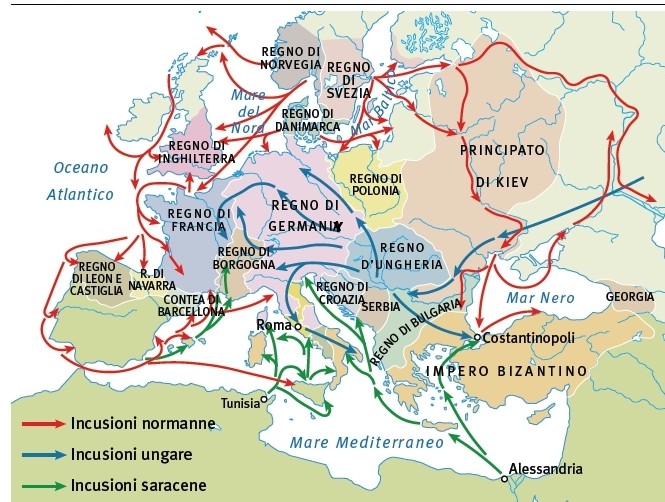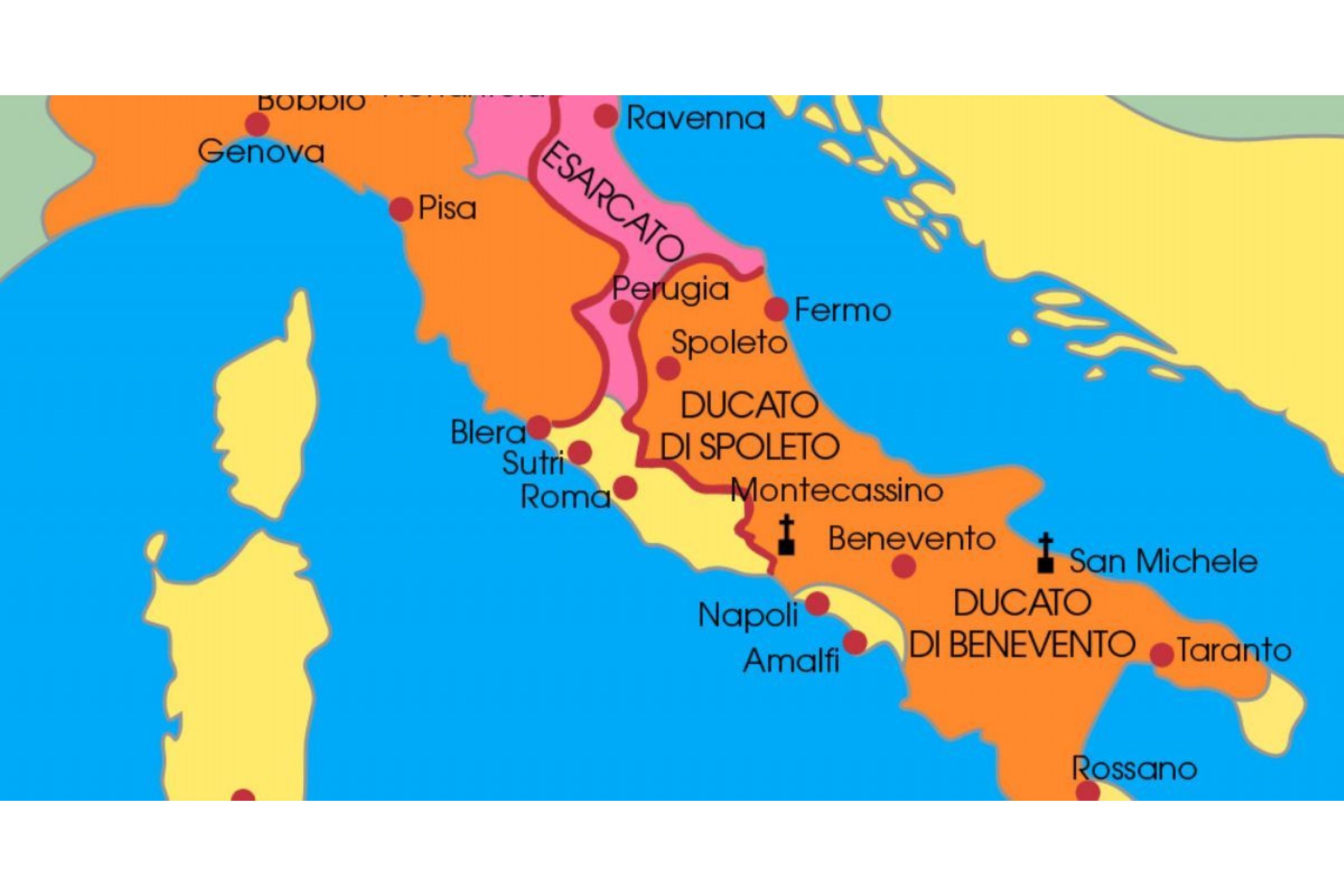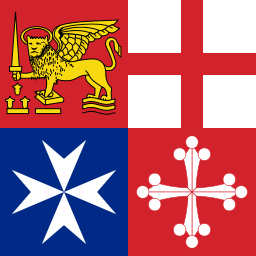After the collapse of the Roman empire there is only one fairly stable element in Italy - the Pope in Rome .
Italy is continually nibbled at by its neighbours, making the map a leopard spot.
 Viewed on the map, Italy, looks protected from mainland Europe by the Alps, and on all other sides by the sea, this surely must be a single kingdom - or, as the Romans made it, the secure centre of an empire but its geographical position has had just the opposite effect.
Viewed on the map, Italy, looks protected from mainland Europe by the Alps, and on all other sides by the sea, this surely must be a single kingdom - or, as the Romans made it, the secure centre of an empire but its geographical position has had just the opposite effect.
The entire coast is vulnerable to attack from Africa and Balcans. Corsica and Sardinia provide useful stepping stones for invaders coming from southern France or Spain.
All these features can also work to the advantage of the inhabitants of Italy, as the Maritime Republics as Pisa , Amalfi, Genoa and Venice triumphantly prove.
It means that Italy does not have the inward strength of an island. It has, instead, the outgoing opportunities - and with them the vulnerability - of a rich land crowded in upon by interested enemies,
so that the Byzantine emperor still holds the exarchate of Ravenna down the east coast together with Sicily , Northern Italy is officially part of the empire of the Franks, who came into the peninsula invited by Rome to fight the Lombards.
In the early 10th century, Hungarians regularly raid into northern Italy. Arabs from north Africa have by that time captured Sicily from the Byzantines, together with maritime towns on the Italian mainland. In 846 they besiege and partly sack Rome. Over the coming centuries much of Italy is often in the hands of small local princes, but there are also frequent intruders.


